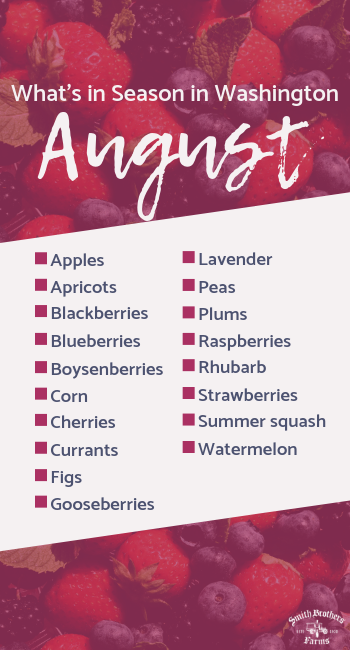How to Make the Most of Your Summer Produce
Summer is a wonderful time to be in Washington. Not only is the sun shining, but we are also spoiled for choice when it comes to fresh, vibrant, and flavorful produce. The one downside is that we only have a short few months to enjoy these brilliant fruits and vegetables! That means it’s an absolute must to make the most out of summer produce.

Two ways you can bring out the season's best flavors are with quick jam and quick pickle.
Quick No-Pectin Jam

What better way to take advantage of the fresh, ripen-to-perfection fruit than with homemade jam?! If you’ve never tried making your own at home, this beginner-friendly, quick jam recipe is the perfect introduction. It skips the pectin and best of all, no canning is involved! One thing to note is that the consistency won’t be as thick as jelly. It will be a touch runny, making it ideal to stir into yogurt, spoon atop ice cream, or add to freshly baked goods.
What you need
- 1 lb. of your favorite berries: strawberries, blackberries, blueberries, raspberries
- 1/2 cup of sugar
- 2 tbsp. fresh lemon juice
- 2 eight-ounce canning jars
- Chilled saucer
Instructions
Add fruit, sugar, and lemon juice to a heavy-bottomed saucepan. Using a potato masher, mash the berries to your desired consistency. Meanwhile, place a small saucer in the freezer. (We will use it later to test if our jam is ready or not!)
Bring to a boil over medium-high heat. Stirring often, cook the mixture until it has thickened - for about 15 to 20 minutes.
After about twenty minutes, it's time to check to see if the jam is ready. Get the chilled plate from the freezer and place a spoonful of the hot jam on it. Tilt the plate so that the jam runs down the plate. If it runs slowly down the plate, it's good to go! Otherwise, return to the pan for another few minutes.
Remove pan from heat and transfer to the canning jars and let cool to room temperature. Seal the jars and store in the fridge for up to one month.
-
Quick Pickle

One way to enjoy the summer produce in Washington is to pickle them. And if you thought you could only pickle cucumbers, think again! There is plenty of produce you can pickle - go traditional with red onions and carrots or a not-so-traditional way with strawberries and watermelon rinds. Pickles add a welcome sweet-and-salty punch and can complement almost any recipe you can think of! Assemble a vibrant salad of pickled beets and goat cheese. Elevate an everyday burger with pickled red onions. Spoon pickled peaches over ice cream. Or, use pickled blackberries in your favorite summer cocktail. See? Pretty much any type of recipe!
Now that you know why pickling is a great idea, what’s the best vinegar to use? As long as it has 5% acidity, most types of vinegar will do. However, many recipes call for distilled white vinegar. It’s mellow in flavor and clear in color, so it won’t affect any light-colored produce.
What you need
- 2 cups vinegar
- 2 cups water
- 2 tbsp. sugar
- 1 tsp. salt
- Your choice of spices, herbs, and aromatics.
- Some options include mustard seeds, fresh thyme, cumin seeds, black peppercorns, bay leaves, fresh dill, peeled garlic, allspice berries, and fresh rosemary.
- Canning jars
Instructions
Prep the produce: wash, chop (in no particular shape), and if needed, blanch.* Divide and place the produce among the jars, plus any flavorings.
Add the vinegar, water, sugar, and salt to a large saucepan and bring to boil. Stir until the sugar and salt have dissolved. Boil for another two minutes and remove from heat.
Fill the jars with the brine, leaving ½ inch at the top. Allow the brine to cool before securing the lids. Let chill for at least an hour or up to two weeks before serving. They will keep in the fridge for 3 to 4 months.
Want to preserve summer’s bounty into fall? For both pickling and jam, be sure to follow proper canning techniques.
*Some crunchy vegetables, like beets and carrots, should be blanched beforehand.
-
More Summer Recipes
- Fresh Blackberry Granola Crisp
A delicious summer berry dessert topped with crunchy granola clusters. - Strawberry Spinach Salad with Chicken
Celebrate strawberry season with this spinach salad. - 3 Side Dishes for Your Summer Cookout
Here are a few delicious side dishes for your next warm-weather gathering.

